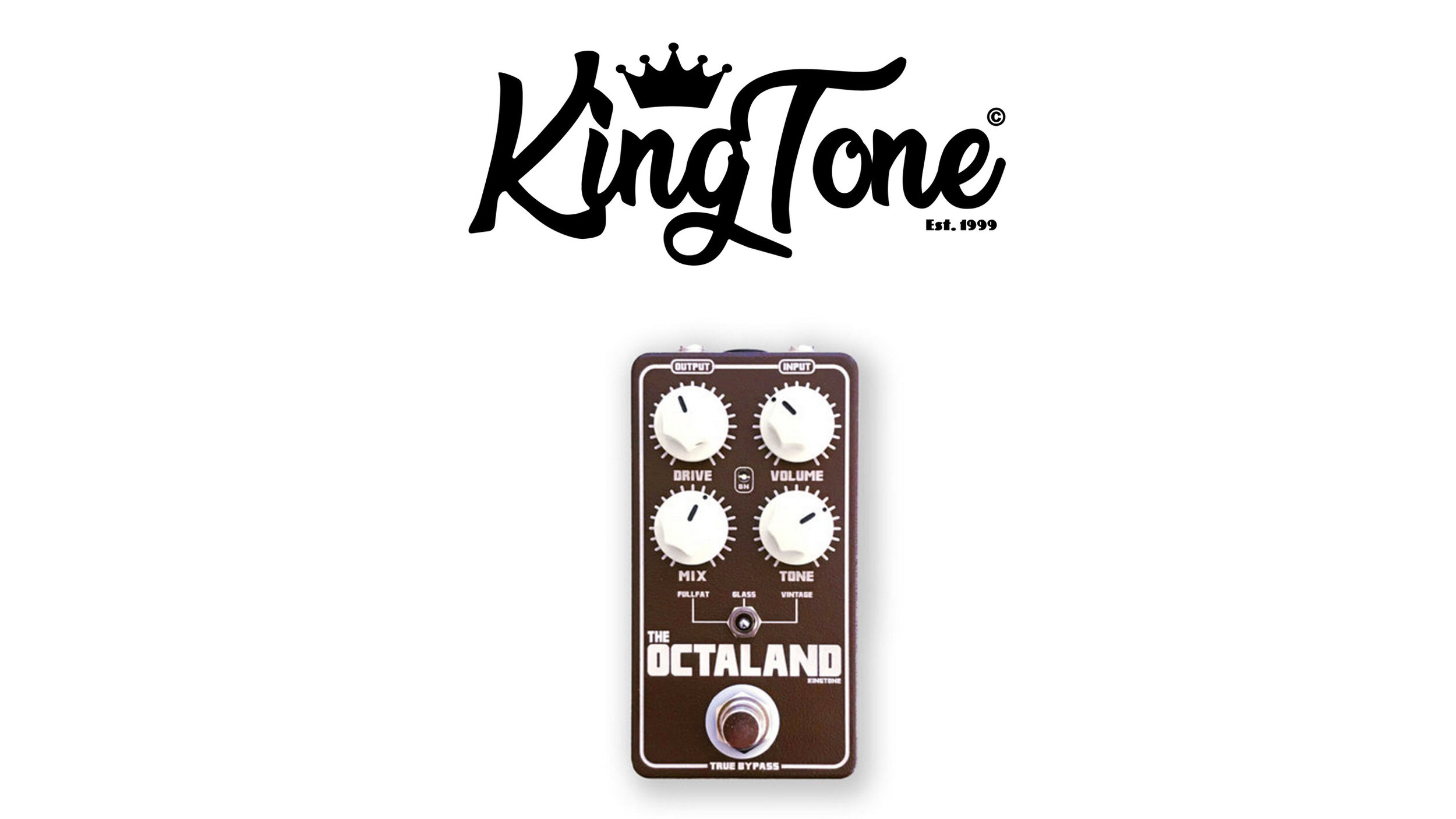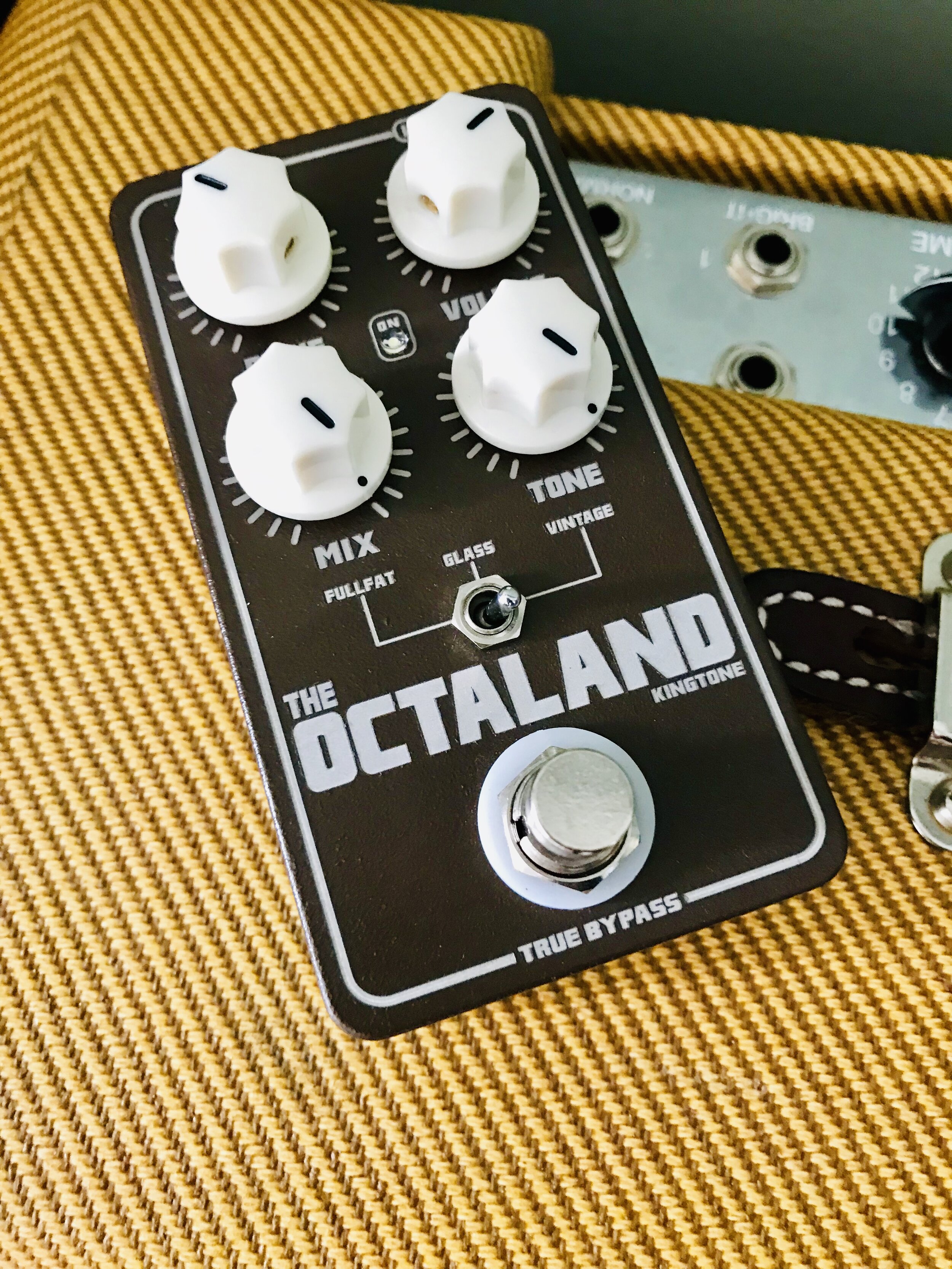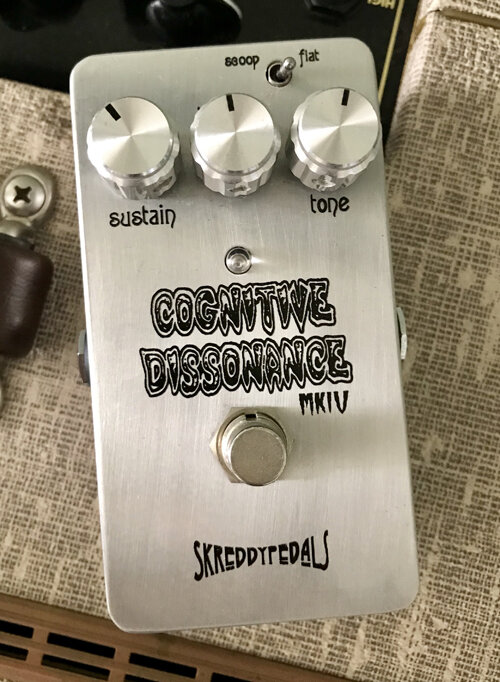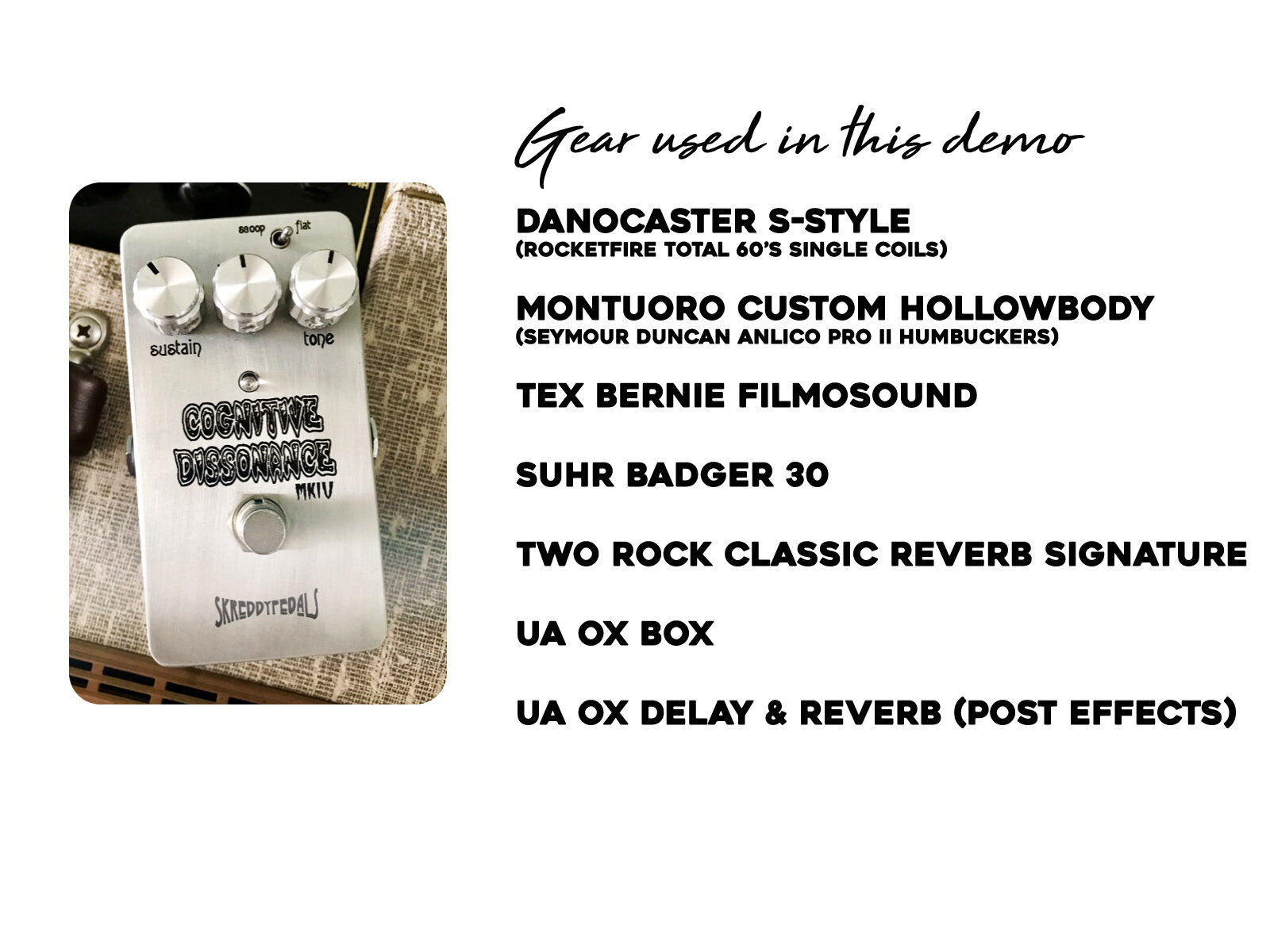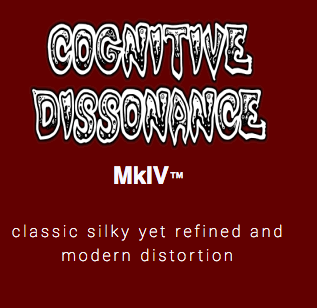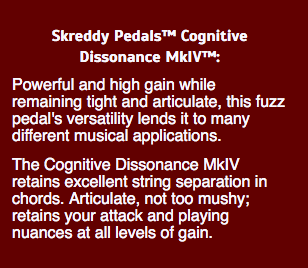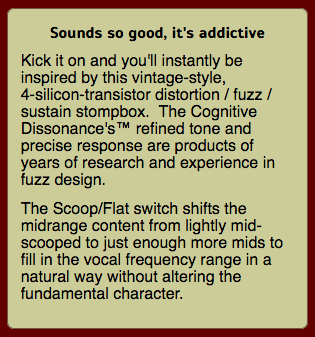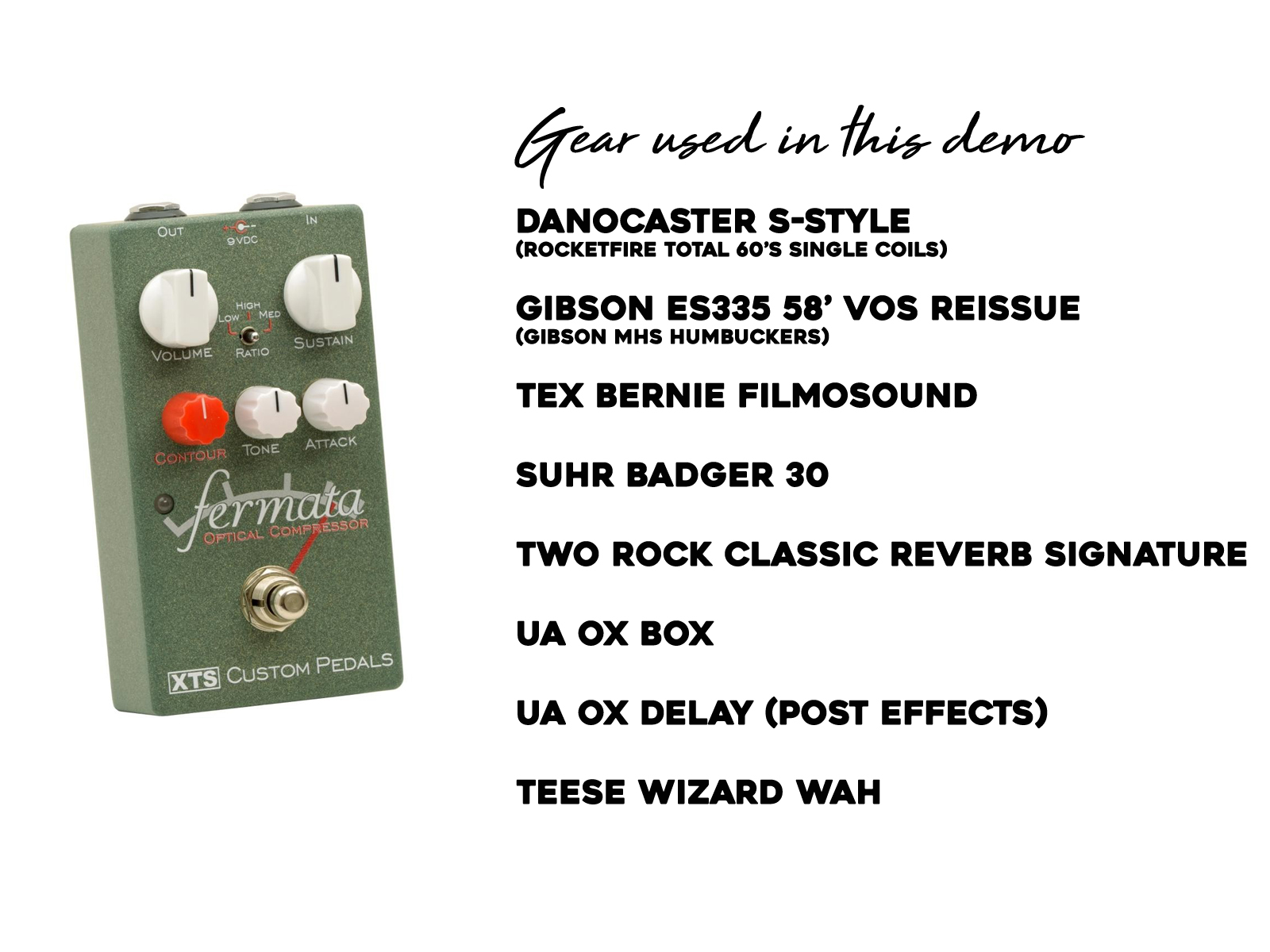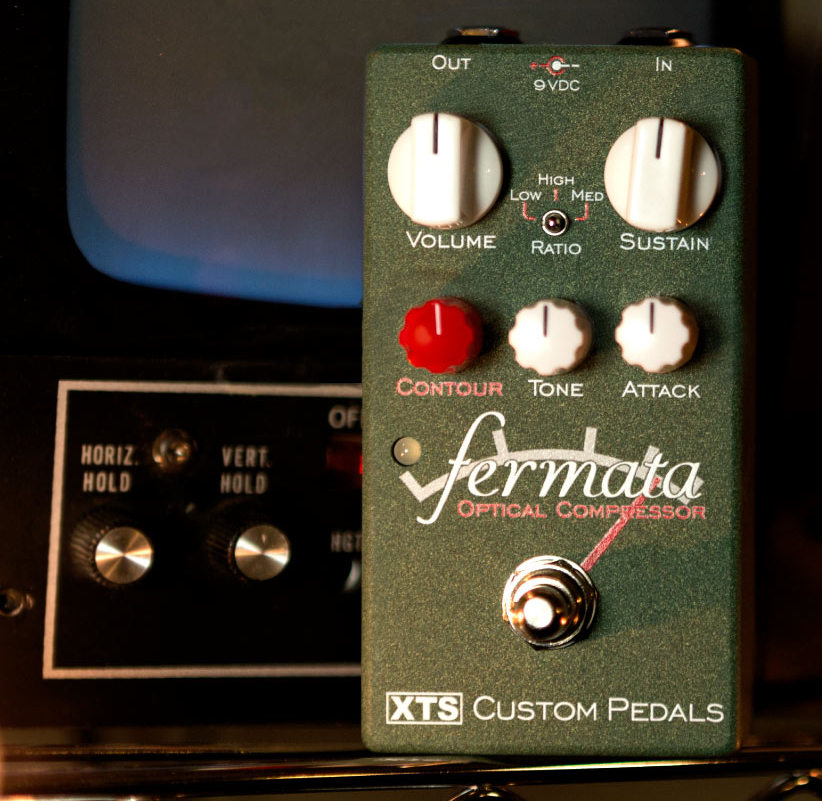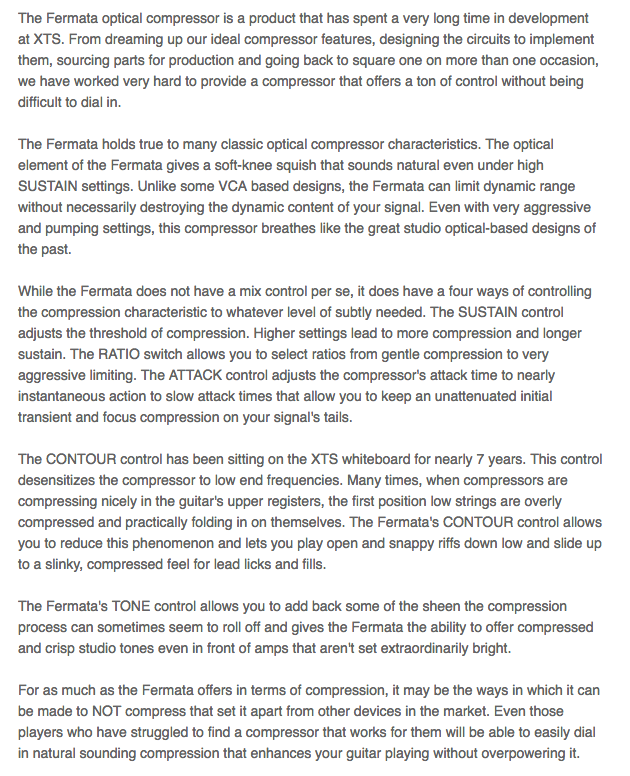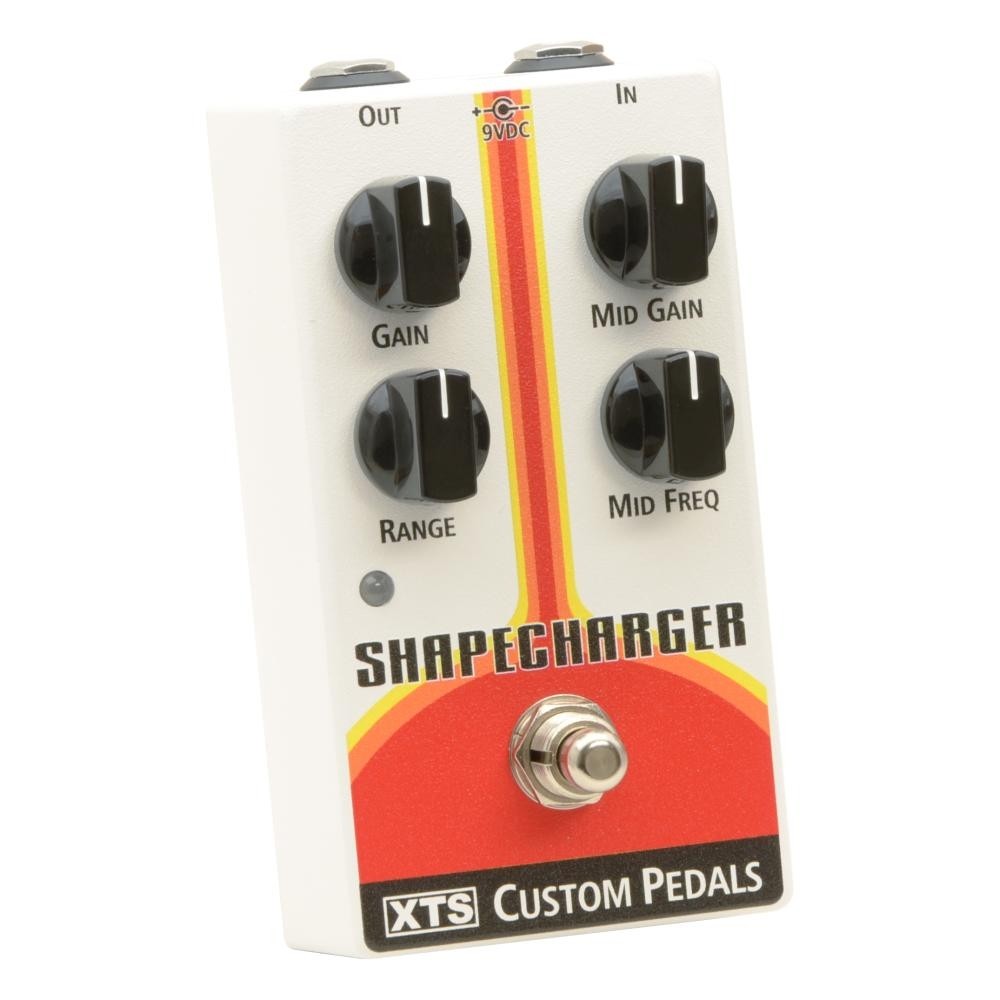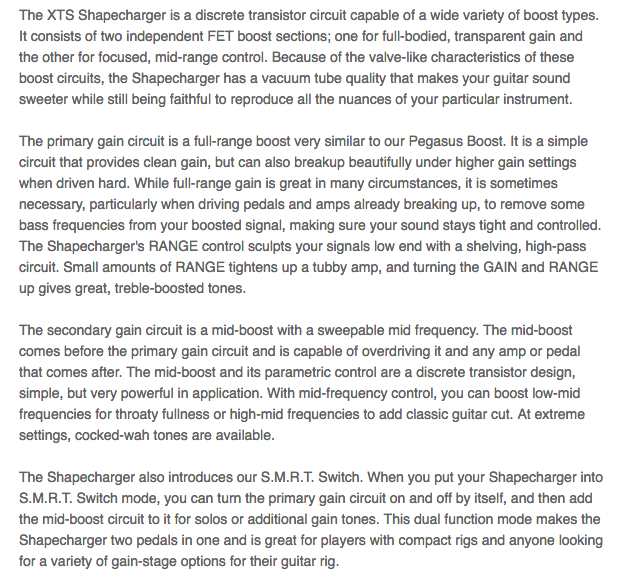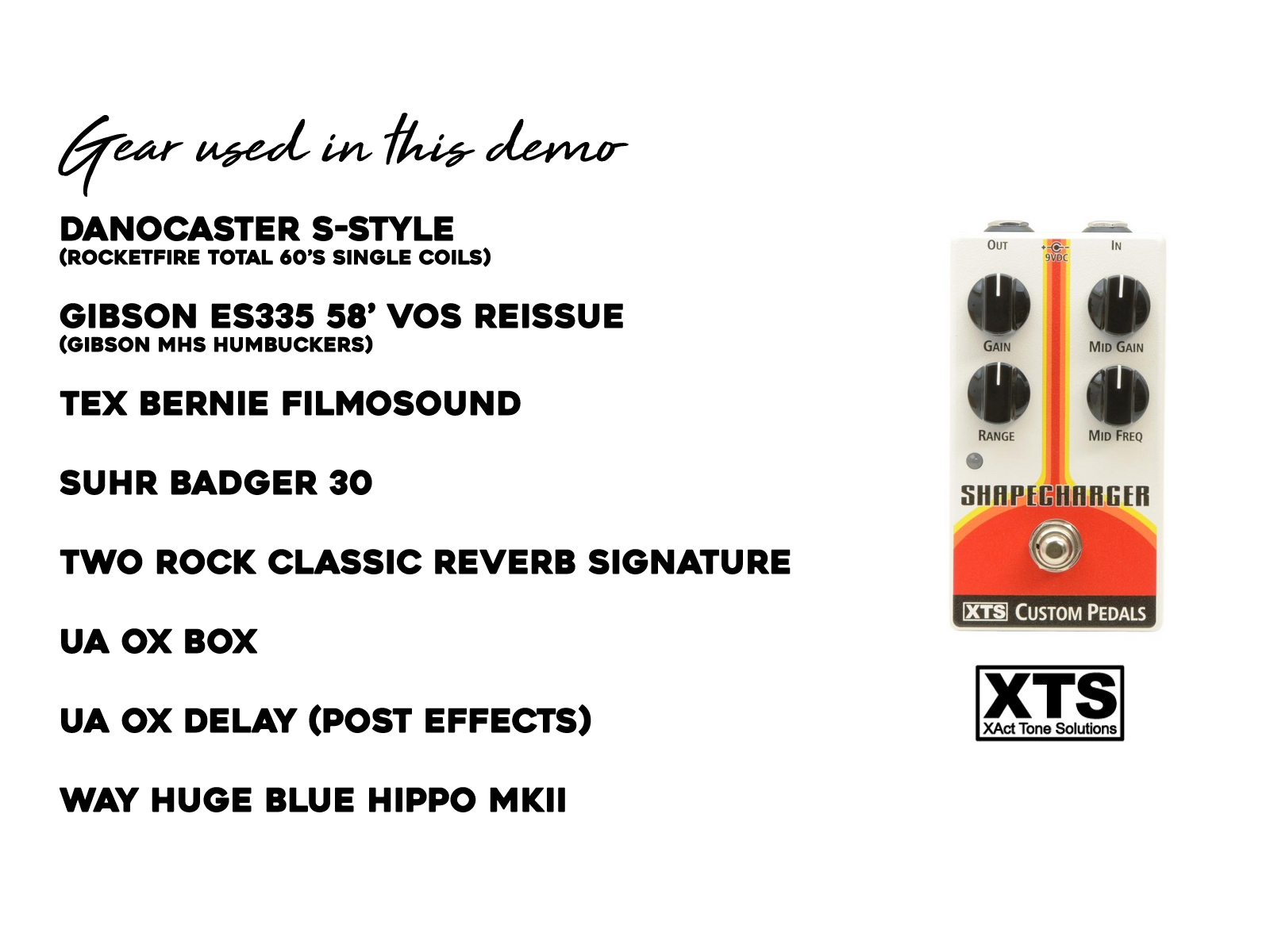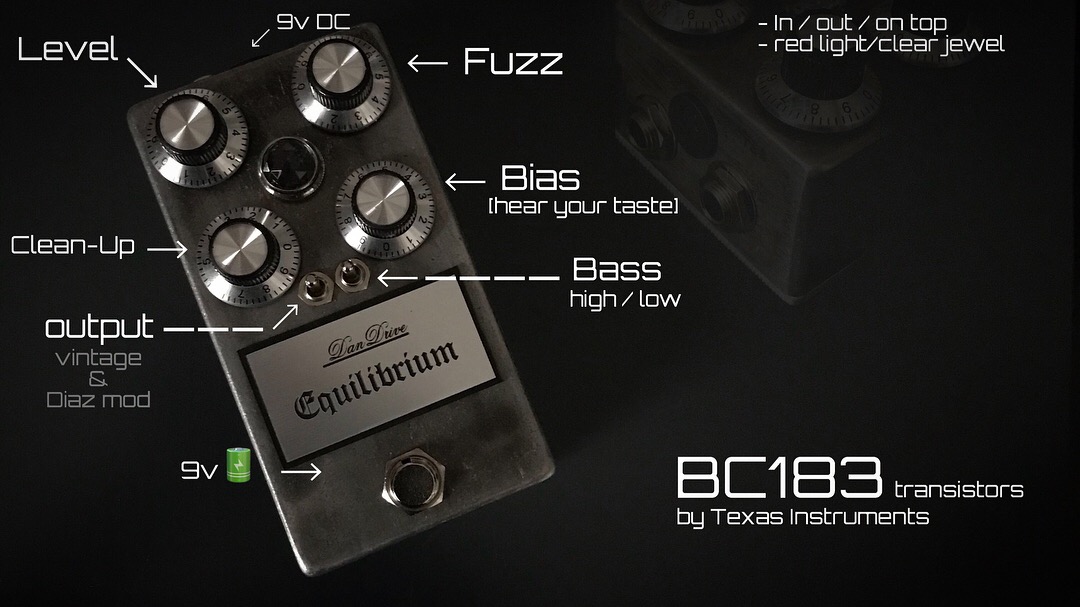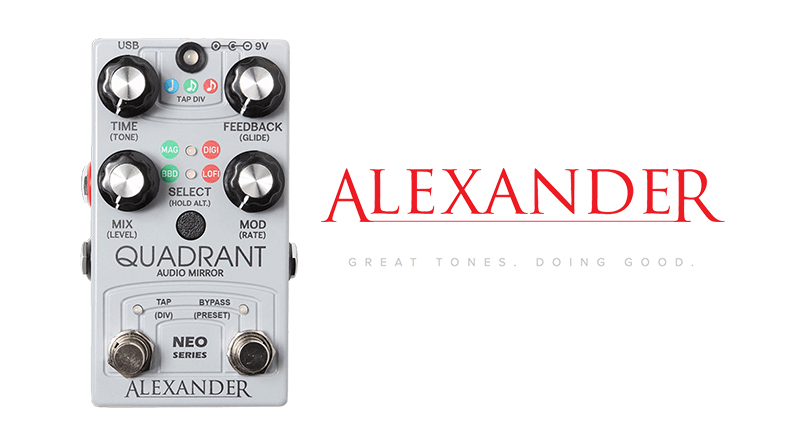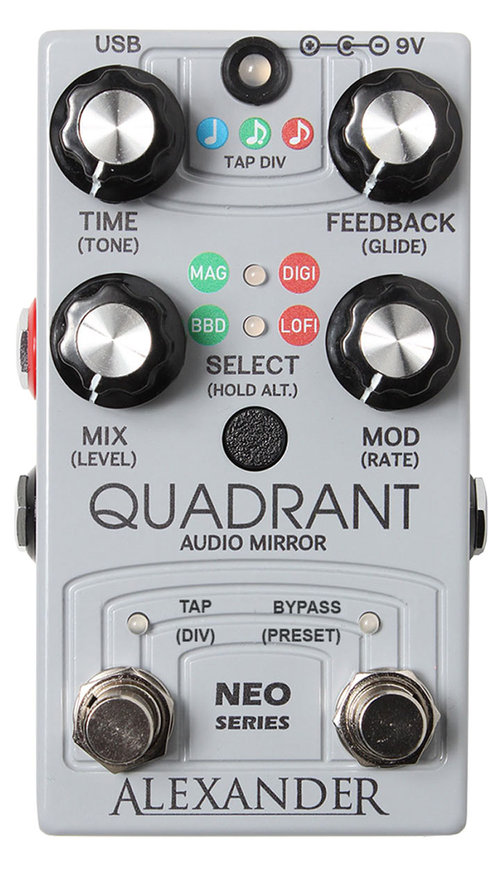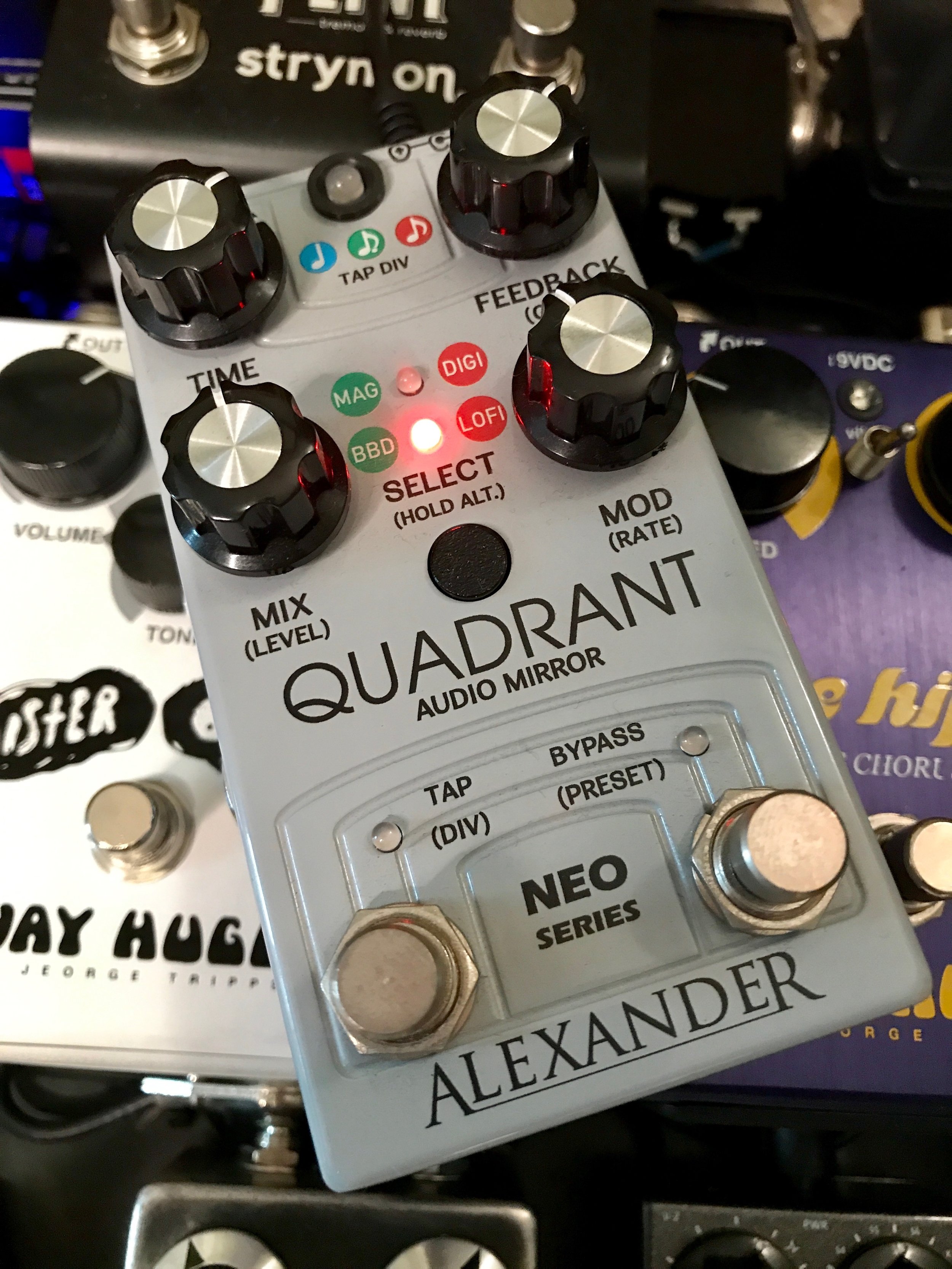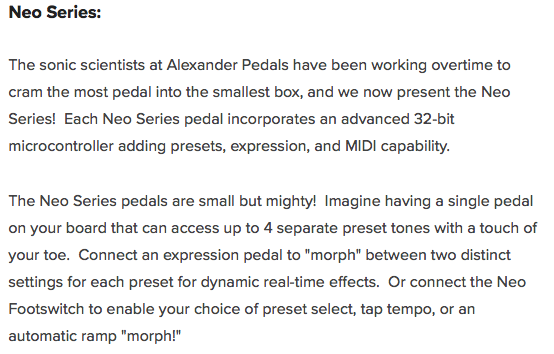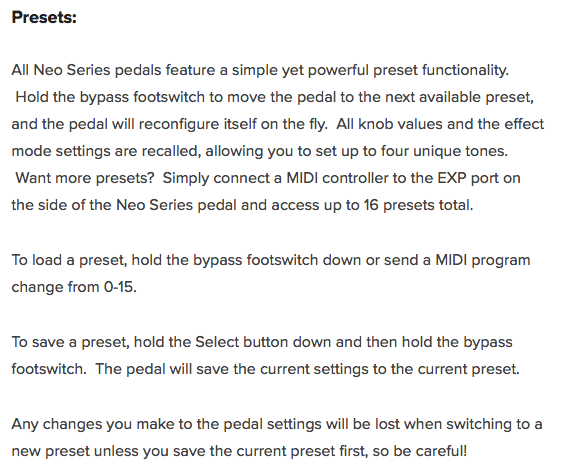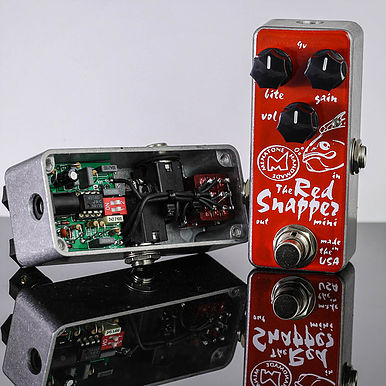Hello Gearheads and Happy New Year! 2020 is upon us and the tones are ruling more than ever!
Today, I’m happy to bring to your eyes and ears the wonderful Octaland Mini from Jesse Davey at Kingtone Pedals. Davey has managed to squish all of the tone and wizardry from his full sized enclosure Octaland in a very small and extremely pedalboard friendly enclosure. Davey has been kicking out some amazing pedals over the last few years, namely his Duellist Overdrive, Germanium and Silicon Fuzzes, Boosts and Uni-Vibes… the man is a non-stop tone hound with a penchant for making killer pedals for the gear connoisseur. One important thing to note, Jesse Davey is not only a pedal designer and builder but also a very impressive professional musician himself with years of touring and music under his belt. Davey was most well known for his work with the seminal British band “The Hoax” and has been making amazing blues and rock music since.
Davey’s lets call it… experience, has yielded a very special brand of musicality to his creations finding their way rapidly into many professional guitarist’s rigs and multiplying at an impressive rate. I’m sure trying to keep up with the demand is something nothing short of a intensive balancing act. Just as an example you will see Kingtone Pedals on such great players pedalboards such as Doyle Bramhall II, John Shanks, Joe Perry, and the list goes on. We LOVE these pedals and for good reason. It’s almost as if Davey’s muse is part and parcel within each of us.
I’ve had a blast putting The Octaland Mini through it’s paces. It’s very much familiar and very much just a little different than what you might be used to. I mean, essentially you can get all the familiar blues-rock Octavia Fuzz tones we’ve all heard on records and in the halls of rock history… but you can also get modern and unique tones out of this small little box of joy. With just 4 knobs and one 3 position switch there are decades of sounds ranging from light boost all the way to full out raging Octave Fuzz. Davey has been very crafty with the options here, allowing for a wide variety of feel via the EQ settings.
Full Fat - Very satisfying and round. This option gives you the most gain available and is killer for a huge guitar sound or for using with bass. In the demo below I used the Octaland Mini on all the bass parts and it’s perfect.
Glass - This EQ option gives you a very cutting and up front tonality. It’s the brightest of the options and is really good for dark guitars or amps or for dialing in a really nasty nasally Octave fuzz tone. Perfect as an effect for a special moment in a track.
Vintage - Old school Octavia tones man! Hendrix, Bramhall… it’s right here. A little bit more biting and some low end shaved off. It’s the familiar feel and voice of the Octavia pedals we all love. Davey has released a setting sheet specifically to nail the ‘Band of Gypsys’ Octavia tone and it’s ruling… You can check that out below in the image gallery.
The rest of the controls are quite simple and effective. Volume and Gain are both interactive with each other. Mix is very useful for getting a gritty and fat clean boost, Doyle Bramhall II Prescription Electronics C.O.B. tones all the way to full blast Octavia. Mix is very effective and super simple to dial in. The tone control is one of the best inventions on an Octavia style pedal. This allows you to really tailor not only the brightness, but how the Octave Fuzz sits in the mix. If you want to get more of a warm and wholly tone, it’s there… if you want vintage Octavia it’s there. These controls, as a whole, interact very well with each other - both musically and most importantly, easily!
Davey has managed to make The Octaland Mini one of the most versatile and pedalboard friendly Octave fuzzes around. Top mounted power and input/output jacks make fitting it on a tight pedalboard super easy. It’s almost as if they’ve thought about it all! Intelligent and toneful design… this is what makes these pedals special.
It was an absolute joy to work with The Octaland Mini in this demo below. I’ve used it on all the guitars and bass in the track. Everything from gritty boost all the way to full vintage Octavia glory.
I HIGHLY recommend this pedal. It’s going straight to my pedalboard… that’s for sure! To learn more about The Octaland Mini and the rest of the Kingtone line, take a look at the links below for more information.
Until next time! Much love & tone!
https://www.kingtoneguitar.com
